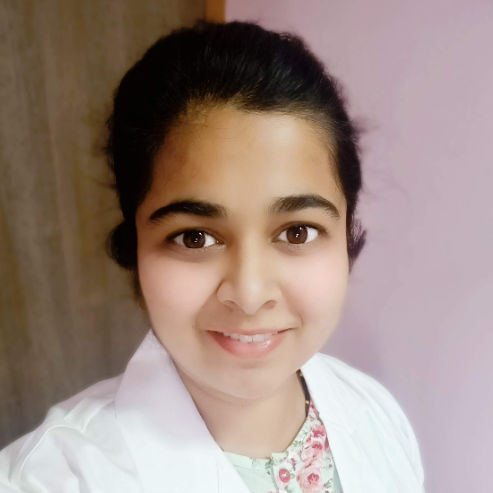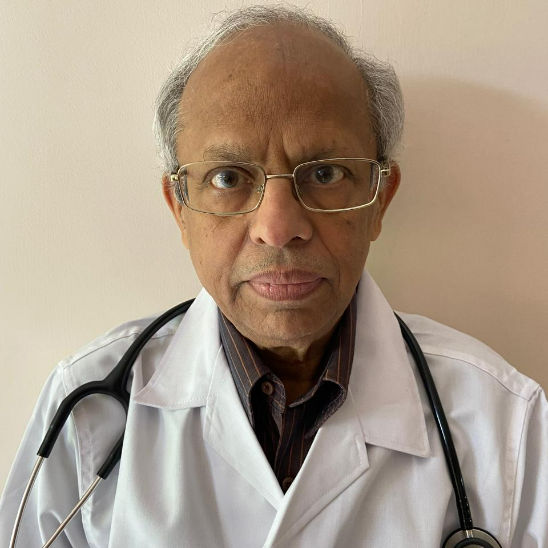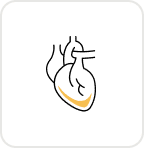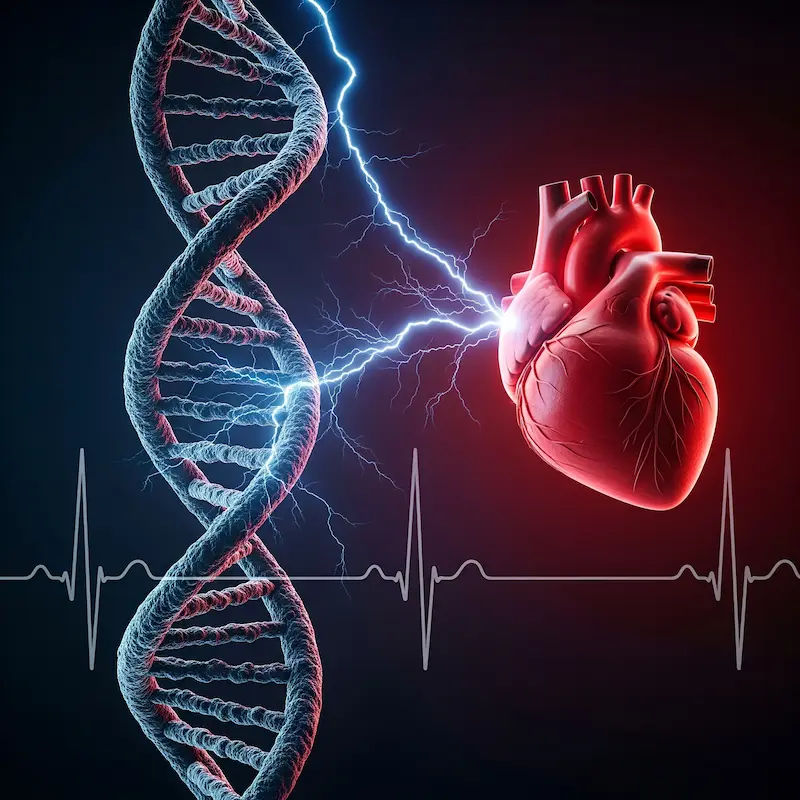A Parent's Guide to Heart Disease in Children Types, Symptoms & Treatment
Know about pediatric cardiac diseases, symptoms, diagnosis, treatment options and living well with cardiac issues and more.

Written by Dr. Mohammed Kamran
Reviewed by Dr. Rohinipriyanka Pondugula MBBS
Last updated on 6th Oct, 2025

Introduction
Discovering your child has a heart condition can be an overwhelming and frightening experience. The words "heart disease" often bring to mind adult health issues, but children, from newborns to teenagers, can also be affected. This guide aims to demystify pediatric heart conditions, providing you with clear, compassionate, and actionable information. We will walk you through the different types of heart diseases in children, from common congenital defects to acquired conditions, help you recognise the key symptoms, and explain the modern diagnostic and treatment options that offer immense hope.
Understanding Pediatric Heart Conditions
Heart disease in children is broadly categorised into two types: conditions present at birth (congenital) and those that develop after birth (acquired). Understanding this distinction is the first step in grasping your child's specific situation.
Consult a Cardiologist for Personalised Advice
Congenital Heart Defects (CHD): The Most Common Type
Congenital Heart Defects (CHD) are structural problems with the heart that develop before a baby is born. They are the most common type of birth defect, affecting nearly 1 in 100 babies born. CHDs range from simple issues that may not need treatment to complex, life-threatening defects requiring immediate surgery.
These defects occur when the heart or blood vessels near the heart don't form correctly during fetal development. Common examples include holes in the heart (like a Ventricular Septal Defect or VSD), narrowed valves, or misconnected blood vessels. The exact causes of congenital heart defects are often unknown, but a combination of genetics and environmental factors (like maternal diabetes or certain medications during pregnancy) can play a role.
Acquired Heart Diseases: Conditions That Develop After Birth
Acquired heart diseases are conditions that develop in a previously healthy heart. These are less common than CHDs but are still significant health concerns in paediatrics. They can occur at any age during childhood. Key examples include:
1. Kawasaki Disease: An inflammatory illness that can cause swelling in the coronary arteries, potentially leading to long-term heart problems. Recognising the symptoms of Kawasaki disease in toddlers, such as a high fever and rash, is critical for early treatment.
2. Rheumatic Heart Disease: A complication of untreated strep throat, where the immune system attacks the heart valves. It's preventable with antibiotics.
3. Cardiomyopathy: A disease of the heart muscle that makes it harder for the heart to pump blood.
4. Arrhythmias: Irregular heartbeats that can cause the heart to beat too fast, too slow, or erratically.
Recognising the Signs: Symptoms of Heart Problems in Kids
Symptoms can vary dramatically based on the child's age and the specific condition. It's important to remember that many of these signs can also be caused by less serious issues, but they warrant a discussion with your paediatrician.
Symptoms in Babies and Infants
Infants cannot tell you how they feel, so observing their physical state and behaviour is key. Look for:
1. Cyanosis: A bluish tint to the skin, lips, and fingernails. This is a classic sign that blood is not getting enough oxygen.
2. Rapid or Difficult Breathing: Your baby may breathe quickly or seem to struggle for each breath, especially during feeding.
3. Poor Feeding: Difficulty feeding, tiring easily during feeds, or sweating while feeding.
4. Poor Weight Gain: Not gaining weight as expected is a significant red flag.
5. Lethargy: Unusual sleepiness or lack of energy.
Symptoms in Older Children and Teens
In older children, symptoms might be more similar to those in adults but are often subtle or dismissed as something else:
1. Easily Tiring: Getting short of breath or exhausted during physical activity that peers handle easily.
2. Chest Pain or Palpitations: Complaints of a racing, pounding, or fluttering heart.
3. Fainting (Syncope): Fainting during exercise or exertion requires immediate medical attention.
4. Swelling: In the legs, abdomen, or around the eyes.
If you observe any of these signs of heart problems in newborns or older children persistently, it is essential to consult a doctor. You can consult a pediatric cardiologist online with Apollo24|7 for an initial evaluation and guidance on next steps.
How Heart Conditions in Children are Diagnosed
Diagnosis often begins with a paediatrician hearing a heart murmur in a child during a routine check-up. While many murmurs are "innocent" (harmless), further investigation is sometimes needed. Pediatric cardiologists use sophisticated, non-invasive tools:
1. Echocardiogram (Echo): An ultrasound of the heart that provides detailed images of its structure and function. This is the primary tool for diagnosing CHDs.
2. Electrocardiogram (EKG/ECG): Measures the heart's electrical activity to detect arrhythmias.
3. Chest X-ray: Shows the size and shape of the heart and the state of the lungs.
4. Cardiac MRI or CT Scan: Provides highly detailed 3D images for complex defects.
Apollo24|7 offers convenient home collection for certain preliminary tests like pulse oximetry to check blood oxygen levels, which can be a useful first indicator.
Get Your Symptoms Assessed
Treatment Options for Childhood Heart Disease
The treatment plan is highly individualised. The field of pediatric cardiology has made astounding advances, offering a range of solutions.
Medications and Monitoring
Some minor defects may only require monitoring over time. Medications can help manage symptoms, strengthen the heartbeat, control blood pressure, or eliminate excess fluid.
Cardiac Catheterisation Procedures
This minimally invasive technique involves threading a thin tube (catheter) through a blood vessel to the heart. It can be used to repair certain defects, such as plugging a hole or opening a narrowed valve, often avoiding the need for open-heart surgery.
Heart Surgery for Children
For complex defects, open-heart or other types of surgery are necessary. Surgeons can repair valves, close holes, and even reconstruct major parts of the heart. The success rates for these procedures are remarkably high.
Living with a Heart Condition: Long-Term Care and Support
A heart condition is often a lifelong journey, but it doesn't have to define your child's life. How to care for a child after heart surgery and in the long term involves regular follow-ups with a cardiologist, maintaining a heart-healthy diet, and encouraging safe levels of physical activity. The goal is to allow your child to be as active and social as possible while managing their health.
The Emotional Journey: Supporting Your Child and Yourself
This journey is emotional for the entire family. It's normal to feel anxiety, guilt, or stress. Seeking support from hospital social workers, therapists, or parent support groups can be invaluable. Remember, taking care of your own mental health allows you to be a stronger pillar of support for your child.
Conclusion
Receiving a diagnosis of a heart condition for your child is a life-altering moment, filled with uncertainty. However, it's crucial to hold onto hope. The landscape of pediatric cardiology has been transformed by incredible medical advancements. What were once considered fatal conditions are now often manageable chronic illnesses, and many children treated for heart defects thrive into adulthood. This guide has outlined the types, symptoms, and pathways to care to empower you as a parent. You are not alone on this journey. By partnering with a dedicated healthcare team, staying informed, and advocating for your child, you can navigate the challenges ahead.
Consult a Cardiologist for Personalised Advice
Consult a Cardiologist for Personalised Advice

Dr. Zulkarnain
General Physician
2 Years • MBBS, PGDM, FFM
Bengaluru
PRESTIGE SHANTHINIKETAN - SOCIETY CLINIC, Bengaluru

Dr. Anand Ravi
General Physician
2 Years • MBBS
Bengaluru
PRESTIGE SHANTHINIKETAN - SOCIETY CLINIC, Bengaluru

Dr. Tripti Deb
Cardiologist
40 Years • MBBS, MD, DM, FACC, FESC
Hyderabad
Apollo Hospitals Jubilee Hills, Hyderabad

Dr Nazneen Khan
Cardiologist
7 Years • M.B.B.S, M.D (MEDICINE), DrNB CARDIOLOGY
Pune
Apollo Clinic, Viman Nagar, Pune

Dr. E Prabhakar Sastry
General Physician/ Internal Medicine Specialist
40 Years • MD(Internal Medicine)
Manikonda Jagir
Apollo Clinic, Manikonda, Manikonda Jagir
(150+ Patients)
Consult a Cardiologist for Personalised Advice

Dr. Zulkarnain
General Physician
2 Years • MBBS, PGDM, FFM
Bengaluru
PRESTIGE SHANTHINIKETAN - SOCIETY CLINIC, Bengaluru

Dr. Anand Ravi
General Physician
2 Years • MBBS
Bengaluru
PRESTIGE SHANTHINIKETAN - SOCIETY CLINIC, Bengaluru

Dr. Tripti Deb
Cardiologist
40 Years • MBBS, MD, DM, FACC, FESC
Hyderabad
Apollo Hospitals Jubilee Hills, Hyderabad

Dr Nazneen Khan
Cardiologist
7 Years • M.B.B.S, M.D (MEDICINE), DrNB CARDIOLOGY
Pune
Apollo Clinic, Viman Nagar, Pune

Dr. E Prabhakar Sastry
General Physician/ Internal Medicine Specialist
40 Years • MD(Internal Medicine)
Manikonda Jagir
Apollo Clinic, Manikonda, Manikonda Jagir
(150+ Patients)
More articles from Paediatric Cardiac Services
Frequently Asked Questions
1. Can congenital heart defects be detected before birth?
Yes, many significant CHDs can be detected during a fetal ultrasound, specifically a fetal echocardiogram performed around 18-24 weeks of pregnancy. This allows families and doctors to plan for care immediately after birth.
2. What is the life expectancy for a child with heart disease?
This varies greatly depending on the specific defect and its severity. With modern treatments, the vast majority of children with CHDs survive into adulthood. Many have a near-normal life expectancy for a child with heart disease, especially those with simpler defects.
3. Will my child be able to play sports?
Many children with treated heart conditions can participate in sports and physical activities. The cardiologist will determine what level of activity is safe based on the child's specific condition and heart function.
4. Are heart problems in children genetic?
While most occur sporadically, there can be a genetic component. If you have a family history of CHDs, genetic counselling may be recommended before or during pregnancy.
5. What is the difference between a 'hole in the heart' and a murmur?
A 'hole in the heart' (e.g., VSD) is a structural defect. A heart murmur is a sound—a whooshing or swishing noise heard between heartbeats. A murmur can be caused by a hole, a leaky valve, or simply be an 'innocent murmur' with no underlying problem.

